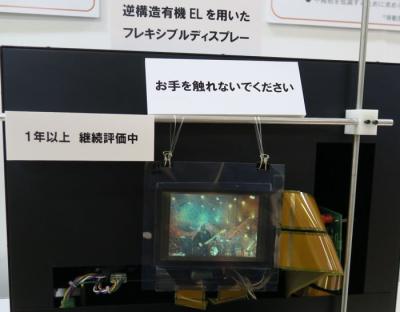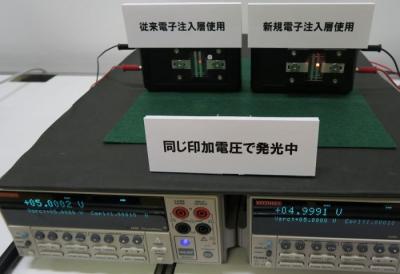In 2013, the Japan Broadcasting Corp (NHK) and Nippon Shokubai developed a new OLED structure called inverted OLED, or iOLED, that drastically improves oxygen and moisture resistances. The basic idea behind iOLED is to invert the structure between the electrodes of a bottom-emission OLED. The electrodes are based on an organic material (polyethyleneimine) and not Lithium-based like most electrodes.
 NHK iOLED (2015)
NHK iOLED (2015)
In 2015, NHK demonstrated a full-color iOLED display that uses a film substrate. The company now demonstrated the same display - more than one year after it was fabricated - still working even though there is almost no encapsulation.
NHK also developed a newer-generation iOLED technology, that uses a new organic material and additive for the electron injection layer. NHK demonstrated a red iOLED device in which the driving voltage was lowered to 3.7V, the internal efficiency returned to 100%, and the emission lifetime was drastically increased to 10,000 hours or longer.

NHK is now aiming to accelerate the development of green andblue iOLED devices.

